
Logan and Albert Conservation Association

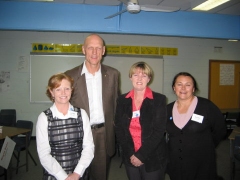 Ten minutes is not a long time but Anne Page in a 10 minute interview with Federal MP Peter Garrett with Maree and Laurie from Veto (the group fighting the Loganlea to Jimboomba Energex powerline along the Logan River) painted the big picture. The topic they spoke about was in relation to protecting ecological corridors from infrastructure and they used the examples of the Loganlea to Jimboomba Energex proposal and the Mt Lindesay Highway upgrade. Although these are state issues they managed to link this to federal issues e.g. current federal funding push to provide infrastructure for recovery from the current financial crisis, the need for increased investment in renewable energy options, protecting biodiversity (recent community consultation closed on the Australian Biodiversity Strategy), and the need for an integrated approach to planning across all levels of government.
Ten minutes is not a long time but Anne Page in a 10 minute interview with Federal MP Peter Garrett with Maree and Laurie from Veto (the group fighting the Loganlea to Jimboomba Energex powerline along the Logan River) painted the big picture. The topic they spoke about was in relation to protecting ecological corridors from infrastructure and they used the examples of the Loganlea to Jimboomba Energex proposal and the Mt Lindesay Highway upgrade. Although these are state issues they managed to link this to federal issues e.g. current federal funding push to provide infrastructure for recovery from the current financial crisis, the need for increased investment in renewable energy options, protecting biodiversity (recent community consultation closed on the Australian Biodiversity Strategy), and the need for an integrated approach to planning across all levels of government.
Mr Garrett was given a document that included maps from SEQRP and local planning and he did say that he knew about the SEQRP, so that's a start. 10 minutes went no where of course.The brief given to Mr Garrett did refer to the Bromelton rail corridor but they did not get to speak about this.
MORE than 400 people jammed in to the school hall at Beenleigh State High School on Tuesday night as Prime Minister Kevin Rudd, in his second visit to the area since the 2007 election, hosted his fourth Federal Community Cabinet meeting for the year.
Students, community group representatives, business people and council and state politicians were part of the crowd which erupted in to applause when the Prime Minister entered the hall to join the 20-strong contingent of cabinet ministers also on hand.
The Prime Minister, introduced by Federal Member for Forde Brett Raguse, delivered a 20 minute address before fielding questions from the floor for an hour.
During the address he highlighted the government's economic focus on "nation building'' through billion dollar infrastructure projects and the effects in areas like Beenleigh.
Well done! L-R: Laurie Koranski, Peter Garrett, Anne Page, Maree Slingsby.
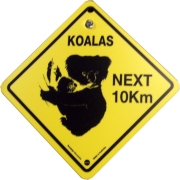 A letter from John Mickel, State Member For Logan,to residents around Chambers Flat Road and Crowson Lane intersection with Mt Lindesay Highway advises us of the status of this major road infrastructure.
A letter from John Mickel, State Member For Logan,to residents around Chambers Flat Road and Crowson Lane intersection with Mt Lindesay Highway advises us of the status of this major road infrastructure.
The letter states
Stage 3 of the Mt Lindesay Highway upgrade will be completed this year.
The service roads linking Granger Road and Stoney Camp Road are already completed as are the roads on either side of Munruben Forest and Munruben Woods. A bikeway on Munruben Forest side of Mt Lindesay Highway is also being completed.
I have approached Main Roads and the local police to ensure uniformity of the speed limit between Chambers Flat and the Maclean bridge. This has been done and the speed limit is now set at 90 kph.
The next phase of safety improvement is being planned for.
I have had discussions with Main Roads for an overpass similar in design to the Granger Road/Stoney Camp Road overpass to be built at Chambers Flat Road and Crowson Lane.
Main Roads are holding a public display on Thursday 2nd July from 5.00pm to 8:30 pm and on Saturday, 4th July from 8.30 am to 12 noon at .the Park Ridge. Shopping Centre, Park Ridge.
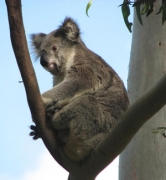 Although Queensland government will say it is taking adequate measures to protect and ensure the survival of koalas in South East Queensland concerned Redlands council and residents are questioning the validity of those measures and have a petition - endorsed by State MP Michael Choi (as the process requires) which now appears on the government website. All residents of Queensland are able to support the petition to take steps to prevent koala extinction in South East Queensland.
Although Queensland government will say it is taking adequate measures to protect and ensure the survival of koalas in South East Queensland concerned Redlands council and residents are questioning the validity of those measures and have a petition - endorsed by State MP Michael Choi (as the process requires) which now appears on the government website. All residents of Queensland are able to support the petition to take steps to prevent koala extinction in South East Queensland.
Koalas have been disappearing from the Redlands Koala Coast area at the rate of 1000 per year and only about 2400 koalas remain. Council, the community and the state government need to work together to stop the inevitable extinction if current land clearing practices continue.
The petition asks parliament to
The petition is available here and closes 30 July 2009.
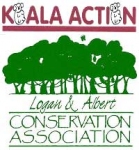 When your children ask you,
When your children ask you,
‘What did you do to save the koala?' What will you say?
The koala is likely to become extinct in South-East Queensland unless the State government and local authorities act now.
A major cause of this devastating slide to extinction is avoidable loss of habitat: lost to
The Queensland Government has the power to make the decisions that will stop this loss.
 IMPORTANT ACTION TO HELP KOALAS IN SOUTH EAST QUEENSLAND especially the Koala Coast koalas in Redlands and Logan.
IMPORTANT ACTION TO HELP KOALAS IN SOUTH EAST QUEENSLAND especially the Koala Coast koalas in Redlands and Logan.
The advertisement below appeared in The Australian, Courier Mail, Sydney Morning Herald, Canberra Times, The Age and the Adelaide Advertiser last Saturday 6 June 2009.
Public comment invited
Submissions close COB Wednesday 5 August 2009
National Koala Conservation and Management Strategy
People interested in the management of koalas or koala habitats are invited to have their say on the draft National Koala Conservation and Management Strategy 2009-2014.
The strategy will outline the actions required over the next five years to conserve koalas and their habitat.
Information gathered through the public comment period will be used to make further updates.
The national strategy is being developed jointly by the Commonwealth, states and territories through the Natural Resource Management Ministerial Council.
More information and a copy of the draft strategy can be found at http://www.environment.gov.au/biodiversity/publications/koala-strategy
The koala is an important part of Australia's natural and cultural heritage. The koala is suffering declines in some parts of Australia and according to the federal government website ,management issues vary significantly from region to region. There is a clear need for a strategic approach to the conservation and management of koalas to maximise the effectiveness of conservation efforts. Koala Coast koalas are experiencing such severe threats to their survival their very continuing existance is of major concern. If current popoualion decline continues, the iconic koala in the bush will be extinct in areas of South East Queensland - from their supposed core habitat areas.
 Natural Resources, Mines and Energy Minister Stephen Robertson has launched a volunteer program aimed at harnessing people power for environmental projects across the state.
Natural Resources, Mines and Energy Minister Stephen Robertson has launched a volunteer program aimed at harnessing people power for environmental projects across the state.
Green Nomads is a new casual environmental volunteering placement program targeting the resources and skills of Australia's largest transient population, grey nomads. Mr Robertson said the initiative would have many benefits with volunteers working to care for the environment, while also building ties with follow workers and the communities they assist. This is an avenue for people who may have some spare time on their hands to assist in the protection and conservation of our unique natural resources.
"We are so lucky to live in such a wonderful state which has rich natural resources and this is a very practical way people can help ensure theses resources are maintained and protected," said Minister Stephen Robertson at the recent launch.
Championed by Queensland Water & Land Carers (QWaLC), a new website will link interested volunteers with environmental projects in the area they live or the areas where they are planning to travel. Possible environmental projects ranged from tree planting to gathering seeds of local native species. The Queensland Government is providing QWaLC with $300,000 for administration and insurance for this registered volunteer group.
"It is only through awareness that people can begin to take action to protect and care for the environment and this program allows people to develop that perspective while helping natural resources management groups with the challenges they face," Mr Robertson said.
The program website is www.greennomads.com.au
Registration is required for volunteers and information is available from the website for Community NRM Groups who would like to host Green Nomads. New groups applying for incorporation can also benefit from this program.
 AYCC Australian Youth Climate Coalition have emailed the video linked here from youtube to every federal politician's office to remind them that a youth climate movement is building. One minute and forty seconds of pure awesome-ness. Check it out below. Help make this video for AYCC and Power Shift a hit.
AYCC Australian Youth Climate Coalition have emailed the video linked here from youtube to every federal politician's office to remind them that a youth climate movement is building. One minute and forty seconds of pure awesome-ness. Check it out below. Help make this video for AYCC and Power Shift a hit.
The AYCC is a growing coalition of 27 member and partner youth organisations from across Australia whose mission is to build a generation-wide movement to solve climate change, through uniting diverse youth organisations around this common challenge.
Through member groups, they aim to inspire, educate, empower and mobilise young Australians to take action on climate change - coordinating, communicating and networking with each other, and running shared projects and campaigns. Website:http://www.aycc.org.au . A list of member groups and partners is available here. School groups can also become members, please contact Ben at ben.margetts [a] youthclimatecoalition.org
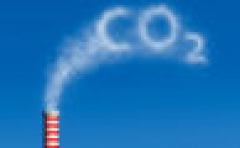 National Climate Emergency Rally 13 June 2009 - join across Australia on 13 June 2009 in a peaceful rally for urgent action and leadership to avoid catastrophic climate change. On Monday 5 May 2009, Prime Minister Kevin Rudd reneged on his 2007 election promise to take action to avoid catastrophic climate change. The clear majority of national and state conservation groups have jointly written to the Prime Minister, voicing their incredulity at this about-face. LACA joins these groups in condemning the Federal government's dilution of its Carbon Pollution Reduction Scheme (CPRS). Open and read the joint letter from the conservation sector to the Prime Minister.
National Climate Emergency Rally 13 June 2009 - join across Australia on 13 June 2009 in a peaceful rally for urgent action and leadership to avoid catastrophic climate change. On Monday 5 May 2009, Prime Minister Kevin Rudd reneged on his 2007 election promise to take action to avoid catastrophic climate change. The clear majority of national and state conservation groups have jointly written to the Prime Minister, voicing their incredulity at this about-face. LACA joins these groups in condemning the Federal government's dilution of its Carbon Pollution Reduction Scheme (CPRS). Open and read the joint letter from the conservation sector to the Prime Minister.  Joint_Statement_from_Conservation_Sector_to_Prime_Minister_5_May_2009.pdf 557.07 Kb 05/06/2009, 20:01
Joint_Statement_from_Conservation_Sector_to_Prime_Minister_5_May_2009.pdf 557.07 Kb 05/06/2009, 20:01
Join the rally on 13 June at 1pm Queens Park, corner of George and Elizabeth streets, Brisbane CBD.
More information go to http://www.climaterally.org/
WEAR RED to signify a climate emergency and bring banners and signs.
The draft Border Ranges Rainforest Biodiversity Management Plan has recently been released for public comment. This is your opportunity to get involved in guiding the direction of recovery actions for the rainforests and related communities, and their component species, found in the Border Ranges Biodiversity Hotpot area over the next 10 years. The public comment period closes on Friday, 28 August 2009.
The draft recovery plan, its appendices and maps can be downloaded from the Department of Environment, Heritage and the Arts' website, visit http://www.environment.gov.au/biodiversity/threatened/publications/recovery/border-ranges.html. For a hard copy, contact the Department's Community Information Unit, email: This email address is being protected from spambots. You need JavaScript enabled to view it. or Freecall: 1800 803 772.
The extract below is from the Department's website:
"The Border Ranges Rainforest Biodiversity Management Plan constitutes the formal national regional recovery plan for threatened species and communities of the Border Ranges North and South (Queensland and New South Wales) Biodiversity Hotspot. The Plan considers the conservation requirements of rainforest and closely related species and communities in the Border Ranges region of NSW and Queensland, which is centred on the McPherson Ranges. It also addresses other species of conservation significance so as to manage the area's biodiversity in a holistic and cost-effective manner.
The Plan identifies the actions to be taken to ensure the long-term viability of the threatened and significant species of the rainforest and related vegetation of the Border Ranges Hotspot, including those that:
Comments on the draft recovery plan should be sent to:
Mail:
Director
Recovery, Planning and Implementation Section
Department of the Environment, Water, Heritage and the Arts
GPO Box 787
Canberra ACT 2601
Email: This email address is being protected from spambots. You need JavaScript enabled to view it.
Fax: 02 6274 1921